Home shoppers may not mean to do so, but many judge a house’s merits based on solely on its exterior. It’s human nature.
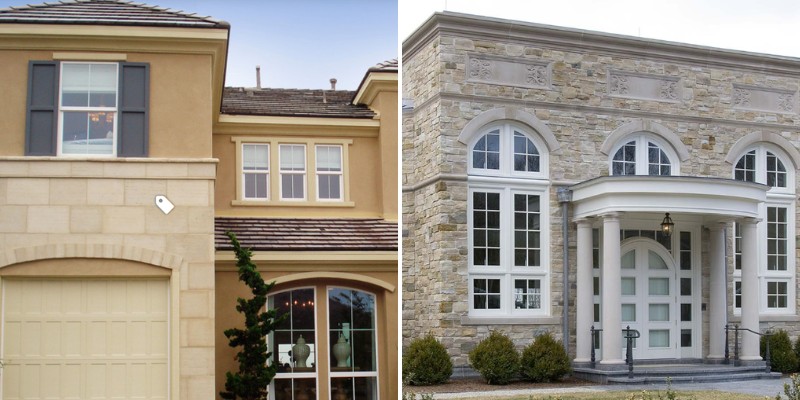
“A well-designed exterior can increase your property value by up to 20%,” say real estate experts and while landscaping plays a part in whether shoppers tour a home’s interiors, compelling exteriors contribute mightily to buying decisions.
Natural stone construction and cladding are especially favored by savvy shoppers because they understand that these materials not only look gorgeous but reduce maintenance costs if properly installed.
That’s why this investment is most likely to pay big dividends over time.
In this article we’ll describe the various types of natural stone that can be used for house exterior, so let’s get started.
Limestone
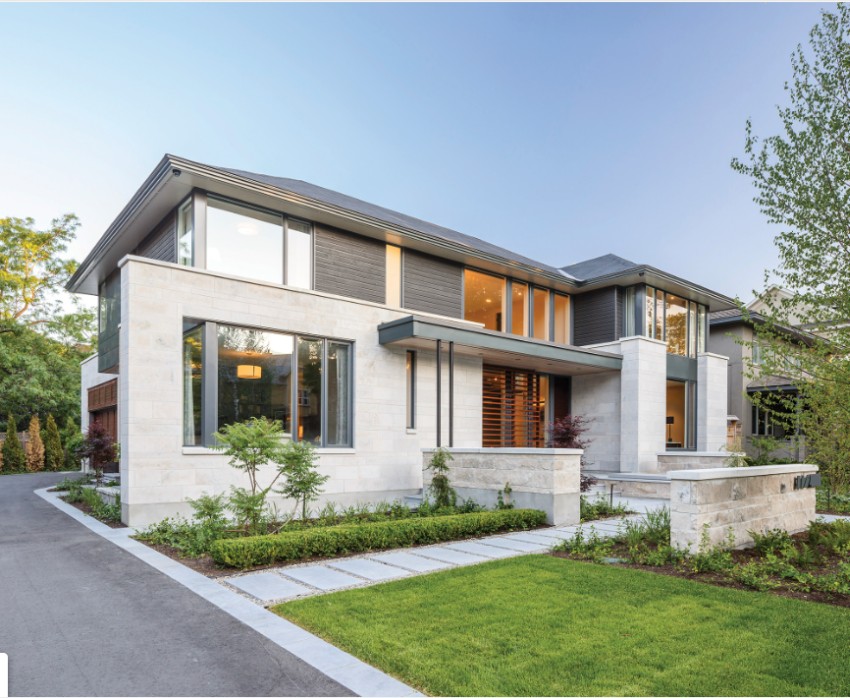
Limestone is versatile, cost-effective and helps homeowners save money because it’s a great heat absorber, thus it does not allow heat to get into the house.
Limestone offers an environmental advantage that saves you from high power bills.
It’s strong enough to last for decades yet soft enough to carve, shape and mold.
It’s the material preferred for builders of some of the world’s most sophisticated societies: Egypt’s Great Sphinx, Greece’s Parthenon, and New York City’s Empire State Building are just a few of the limestone structures that still stand the test of time.
Quartzite
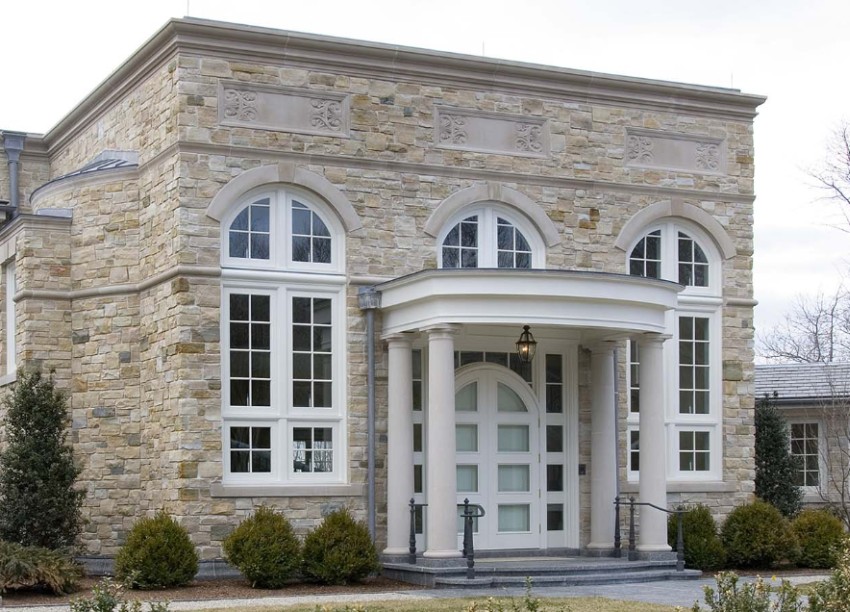
This exterior material is extracted from pure quartz sandstone and because it is one of the hardest stones on the market, it’s ideal for home exteriors, especially in climates where homes take a beating from Mother Nature.
Depending upon where it originates, you can choose between a wide range of yellows, lavenders, browns, and blues when selecting an exterior color.
Sourced most often in India and China, blends of gold, brown, silver and grey are mined in the state of Idaho as well.
Granite
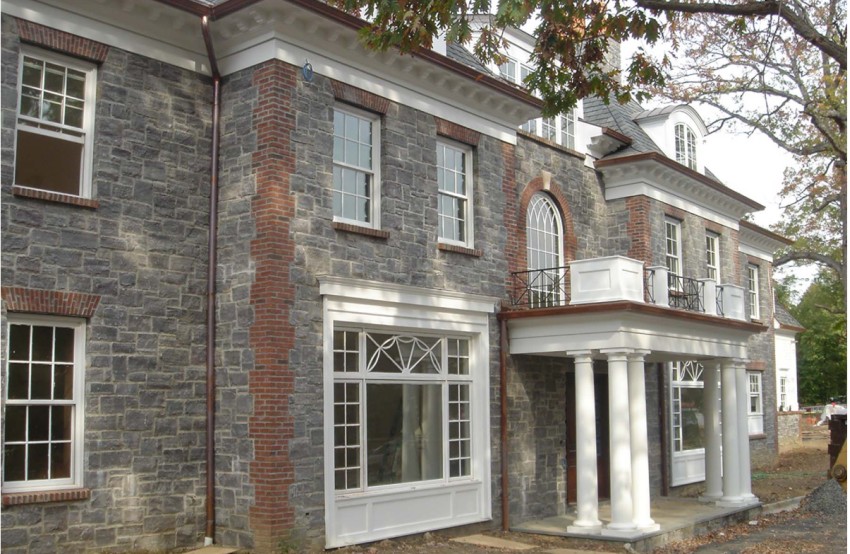
Called “An excellent choice for heavily used surfaces” by stone importers and installers, granite is one of the most popular materials on the market because it’s so hard and since new sources are being unearthed around the world, prices are remaining steady.
Known for its ability to resist abrasion, granite is a favorite of architects in northern climates because it resists chemicals used on grounds to melt snow. Popular, durable, long-lasting, and economical, color options are many as well.
Marble
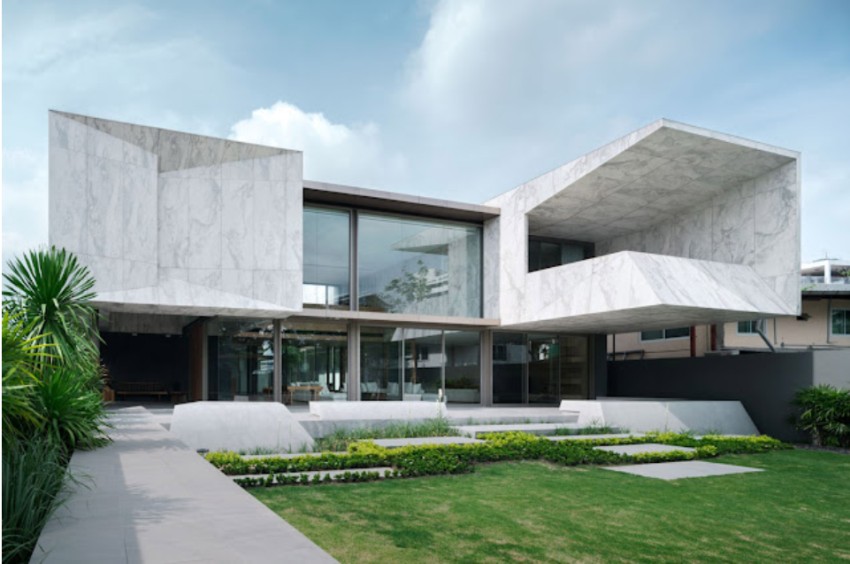
Not only does this highly-coveted natural stone have a legendary reputation for sophistication and grandure, but it regulates air, heat and light coming into a home as well.
Today’s marble products are being categorized and altered slightly to guarantee optimal performance over time.
Ventilated marble is especially popular because it provides insulation near the stone’s cavity that keeps interior temperatures controlled.
In addition to a luxe appearance, treated marble repels water and even contributes to noise reduction.
Flint
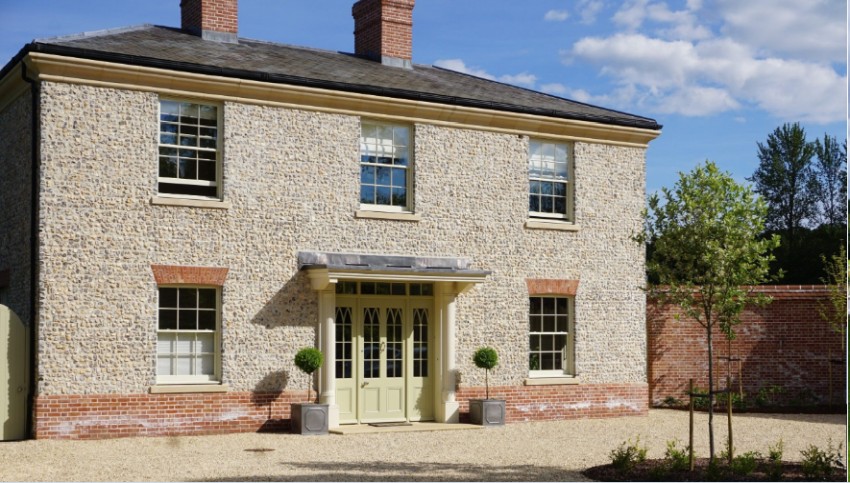
Looking for a natural stone exterior material that sets your home apart from others in the neighborhood? Take a tip from the Royal Institute of British Architects and consider an exterior crafted of masonry with flint cladding.
Called “a rare example of a poetic narrative whose realization remains true to the original concept,” this material application pays tribute to both flint geological evolution and creativity.
While traditional homes with flint exteriors are usually backed by brick, today’s builders are expanding base material choices. Classic and traditional, you’ll probably spend more on flint because it’s hard to bond and requires expert installation.
Travertine
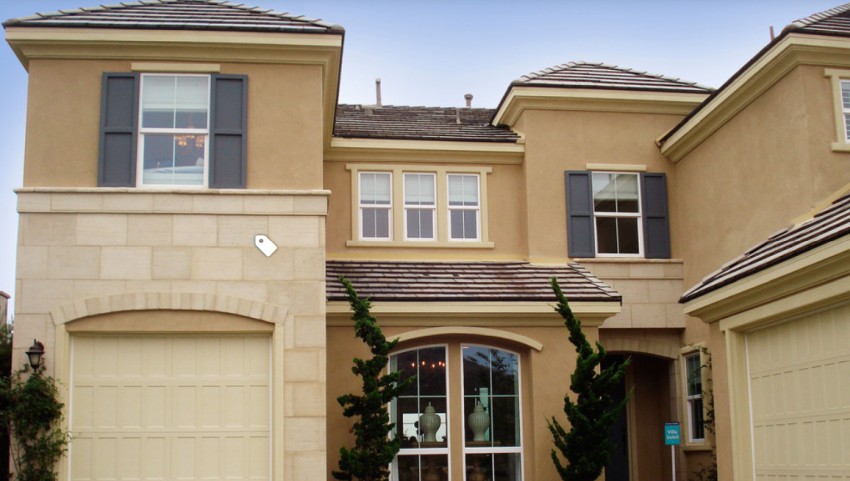
One of the most often-requested natural stone materials for contemporary home facades, travertine belongs to the sandstone family and it comes in a wide range of colors that suit many architectural styles.
Be aware of the fact that travertine comes with a long list of flaws that could cause you to rethink your choice.
No two stones are alike–even those quarried adjacently–so you could face design problems if you insist on exact color, texture, and marking matches.
Further, travertine is an ancient material so it is often imbedded with fossils, pit holes, shells, streaks, and grain differences. If you crave an eclectic look, consider this material.
Sandstone
Often compared to brick exteriors, sandstone is composed of mineral grains like feldspar or quartz integrated with calcite or another mineral to create unique patterns.
Colors are varied: red, brown, green, white or a mix of two depending upon the minerals making up the quarry site.
Sandstone is most often installed over a base of veneer or wood that is sheathed in felt or industrial building paper.
Textured mortar serves as the mounting adhesive. Joints are sealed with more mortar for a durable, hard surface that may require mortar joint repair down the road, and sandstone tends to be more expensive than brick.
Slate
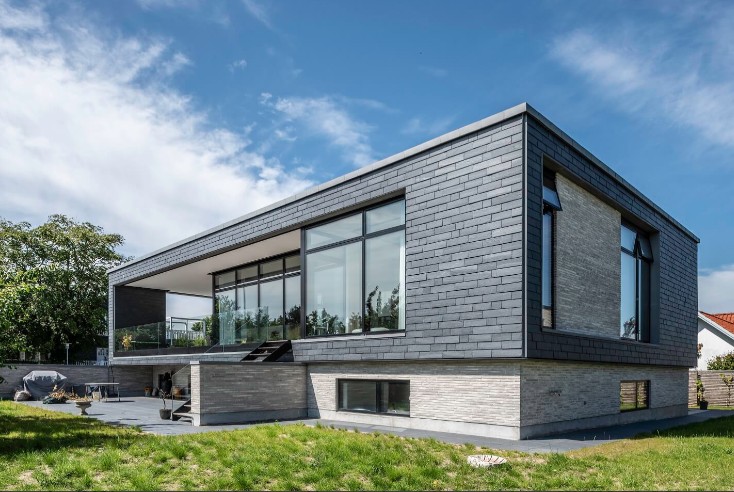
Often called “the perfect solution for architecture,” slate panels offer low maintenance, durability, and stand-out beauty, especially for homeowners seeking a modern-looking exterior.
Known for superior water resistance, slate looks elegant and sophisticated and it’s considered one of the most sustainable options on the market since slate only requires extraction and shaping, so CO2 emissions that are harmful to the atmosphere aren’t generated when slate is mined.
Looking for every way possible to go green? This could be the natural stone solution you seek.
Gneiss
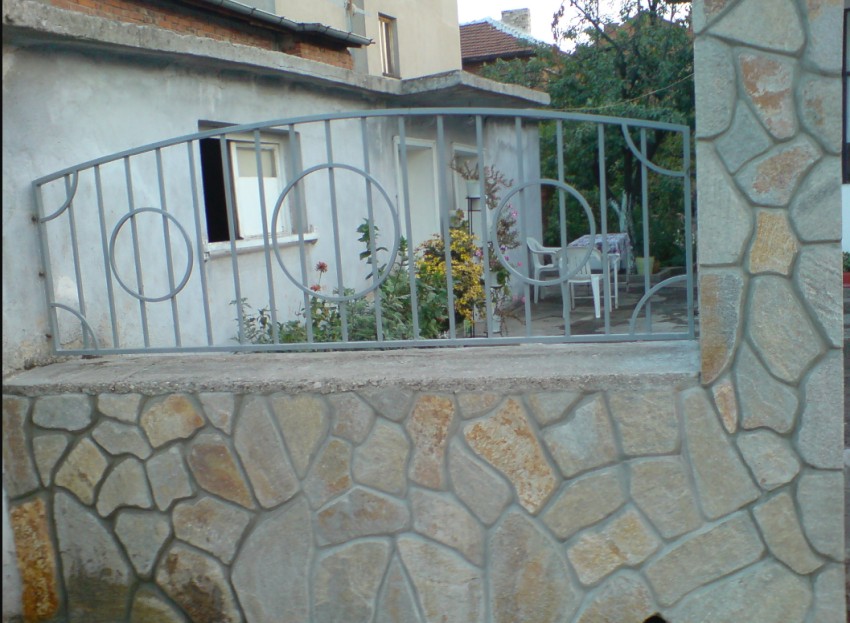
You may never have heard of gneiss, yet it’s one of the most common natural stones on the planet.
If you love the look of granite but either availability or cost prove deal breakers, turning to this product is a solution.
Composed of quartz, feldspar, and mica, gneiss is a course-grain metaphormic rock that features alternating bands of light and dark streaks as a result of its magnesium, iron, aluminum, sodium, and potassium content.
Those alternating light and dark bands are the signature feature of this material and pricing should suit most budgets.
Soapstone (steatite)
If you’re familiar with soapstone because you’re a fan of carved artifacts, statues, and figures, finding out that soapstone can be used to cover home exterior walls could surprise you.
It’s even used to build log homes! Composed of two minerals–talc and magnesite–soapstone looks “soapy” due to talc content.
Time, pressure, and heat factor into in this stone’s formation that delivers these three benefits:
It’s heat resistant, non-porous (ergo bacteria resistant), and chemically neutral so it won’t have to be sealed to keep the surface free of etching, scarring and weathering.
Color options are limited but if you prefer a product that’s quarried in the U.S.A., this one may appeal to you most of all.
A case for faux stone (stone veneer)
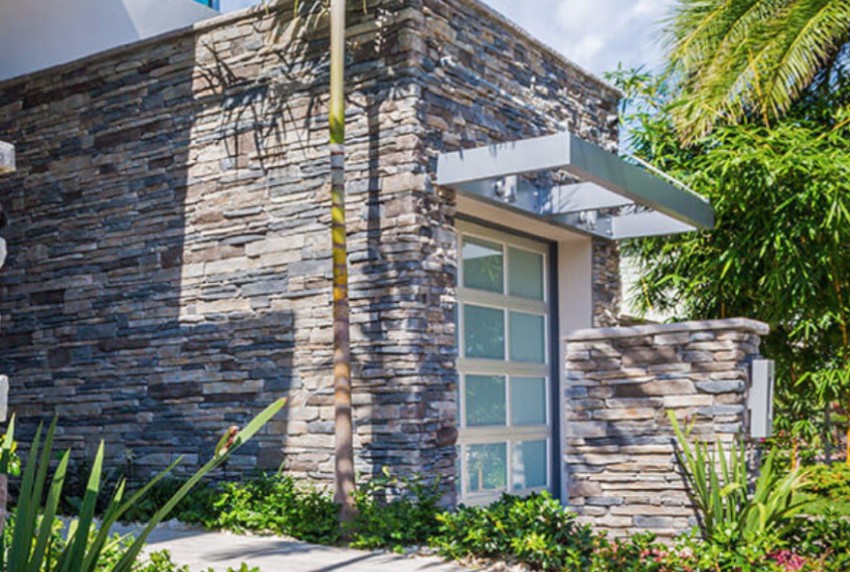
As is the case in so many industries, this one has been at the forefront of innovation for many years, so if you love the look and benefits of natural stone but nothing about your budget is conducive to choosing this option, you may want to investigate faux stone products.
Also known as stone veneer and manufactured stone, it’s becoming a popular choice for more reasons that getting the “look” of natural stone.
These types of products are made by mixing pigments, natural aggregates and cement and the result is a lighter-weight, equally attractive home exterior that is shaped using molds.
Homeowners can expect to recoup 96% of the cost of this material installation because it can “substantially elevate a home’s appearance and provide a solid return on investment,” according to experts.
Installation of these products resembles that of traditional natural stone methods: Mortar is used to “glue” stones together before installing them on exterior surfaces.
Manufacturers warrant this product for between 20- and 75-years, and homeowners enjoy a maintenance-free, fire-resistant, and attractive finish.
That stated, stone veneer is not perfect, especially if the material isn’t installed by someone who knows exactly what they’re doing.
“improper backing materials, missing flashings, and insufficient caulking” can trigger water leaks, interior wall damage, mold, wood rot and structural damage that is expensive to correct—reason enough to get the longest warranty available and make sure installers are fully credentialed when it comes to this synthetic product.
Pros and cons of natural stone for house exteriors
Pros of natural stone
- Available in myriad colors, sizes, stone types, and thicknesses
- Prices vary from stone to stone; there’s something for every budget on the market
- Your home is likely to stand out from neighboring cookie-cutter exteriors
- Expect maintenance free wear that’s superior to other cladding types
- Could increase the resale value of your home
- Properly installed, natural stone contributes to energy savings and lower power bills.
Cons of natural stone
- The labor-intensive option that requires professional direction and plenty of muscle
- Stone itself may be too heavy to be supported by a house’s framework
- Installing natural stone is a long and expensive process
- Not recommended for DIYers for myriad reasons
- Consumers can be tricked into buying faux stone over natural stone
- If repairs are needed, the cost to do the job could be prohibitive.
Resources
https://www.limestone.com/about-us/limestone-learning-center/limestone-good-building-material/
https://www.gaultstone.com/quartzite
https://hdgbuildingmaterials.com/products/natural-stone/granite/
https://www.dedalostone.com/en/marble-facade-cladding/
https://www.architectmagazine.com/project-gallery/flint-house_o
https://www.checkatrade.com/blog/cost-guides/flint-wall-cost-per-metre/
https://www.stonepanels.com/stone-types/travertine-2/
https://homeguides.sfgate.com/sandstone-vs-brick-exterior-homes-101999.html
https://www.cupapizarras.com/usa/news/slate-cladding-panels/
https://www.cupastone.com/everything-you-wanted-to-know-gneiss/
https://www.katahdincedarloghomes.com/blog/material-evidence-soapstone/
https://www.remodelingcosts.org/stone-siding-cost-guide/
https://homebuying.realtor/content/pros-and-cons-manufactured-stone-veneer
Related Posts
- 15 Main Pros and Cons of PVC Decking – Comparison and Discussion
- 12 Different Types of Wood for Outdoor Furniture with Pros/Cons
- Advantages and Disadvantages of Composite Decking for Homes
- What Color Siding Goes With Red Brick? Design Ideas With Pictures
- 8 Unique Porch Ceiling Ideas for your Home (with Photos)
- Main Pros and Cons of Crashed Concrete for Driveways
Leave a Reply